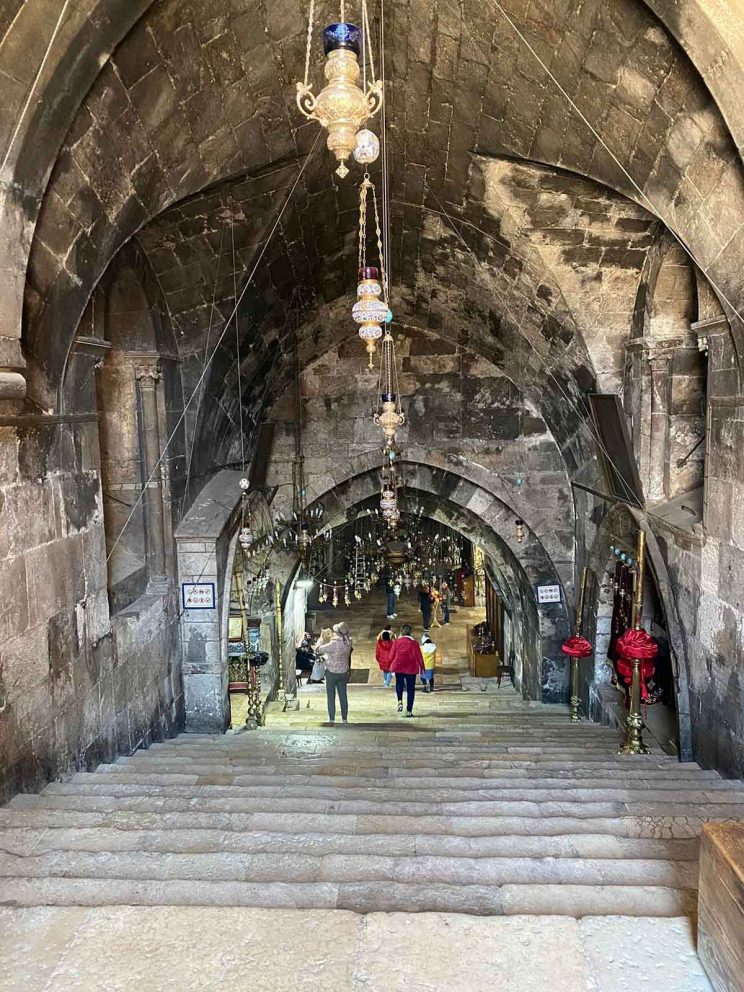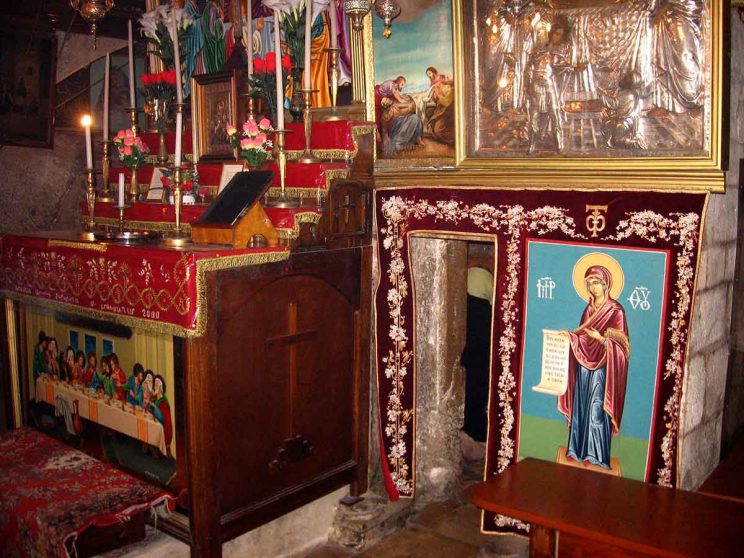If she was assumed, why did Mary need a tomb?
Question: In Jerusalem, there is a place that holds the tomb of Mary. But Our Lady was assumed body and soul into heaven, so why did she need a tomb?
Answer: Mary died on Mount Zion, in the south of Jerusalem. That location is now marked by the Benedictine Dormition Abbey. When she closed her eyes for the last time — the Catholic Church doesn’t say whether or not she actually died, but Pope John Paul II said she did — her soul was received by Christ in heaven. But her lifeless body did not follow immediately.
To all appearances, Mary was dead, and therefore her remains needed a burial in a tomb, which would have taken place on the same day. That tomb in Jerusalem is located in what was then the Garden of Gethsemane at the foot of the Mount of Olives. Several churches stood there from the 4th century, when Christians were allowed to build ecclesiastical structures.
When later the Apostles arrived at the tomb, they found it empty, apart from her shroud. This is at the foundation of the belief in the Assumption of Our Lady into Heaven.
The first written account of that goes back to 451 AD, when Juvenal, the patriarch of Jerusalem, noted that Mary’s tomb was discovered to be empty on the third day after her burial. The shroud was still in existence and sent to Constantinople in 452. But the burial at Gethsemane was attested in several writings preceding Juvenal, possibly going back to the 1st century.
There is an alternative theory that Mary actually died in Ephesus, modern-day Turkey. That is predicated on the notion that John would have taken her with him when he went to that city. However, the consistent tradition of the Church locates her final days in Jerusalem. While Scripture notes that John went to Ephesus, it makes no mention of him being accompanied by Mary.
By then she might well have left our world. The Transitus Mariae, a collection of 4th-6th century writings about the Blessed Virgin’s life, suggest that Mary was no older than 50 when she closed her eyes. By that calculation, if one assumes that Mary was at the youngest 13 when she gave birth to Jesus, and that Jesus was born around 4 BC (the year King Herod died), then the Blessed Virgin was born at the earliest around 17 BC.
If she was indeed around 50 years old when she passed on, then that would have been in the year 33 AD, very soon after the crucifixion. And this would explain why all the Apostles could gather in one place, before they set off on their missionary journeys, and why St Paul makes no mention of having known Mary.
-Günther Simmermacher
Asked and answered in the August 2022 issue of The Southern Cross magazine
- David O’Leary OMI: The First-Ever SA-Born Bishop - August 11, 2025
- Shrines around the World: Our Lady of Lebanon - August 5, 2025
- May Relics Be Sold? - July 22, 2025









